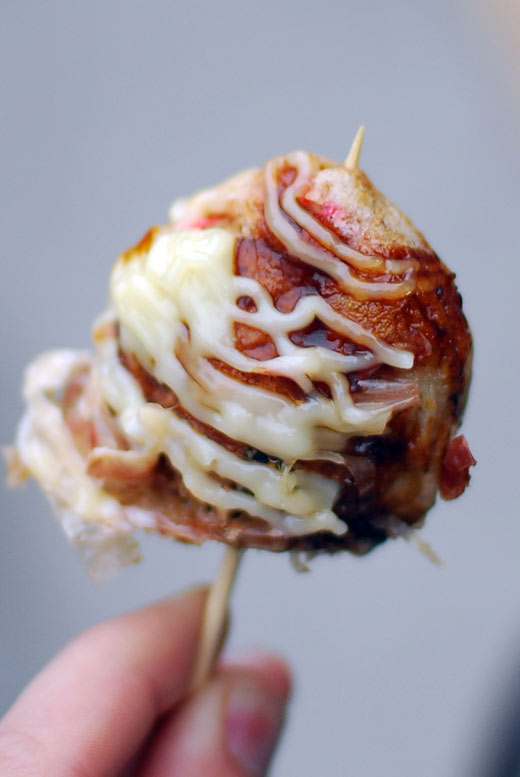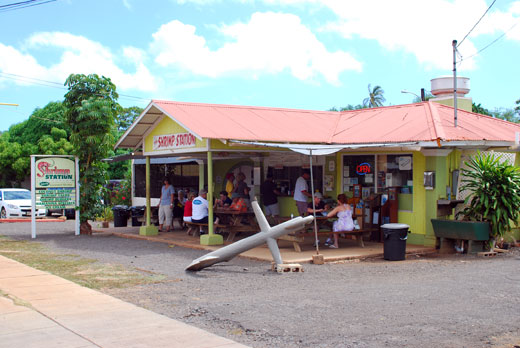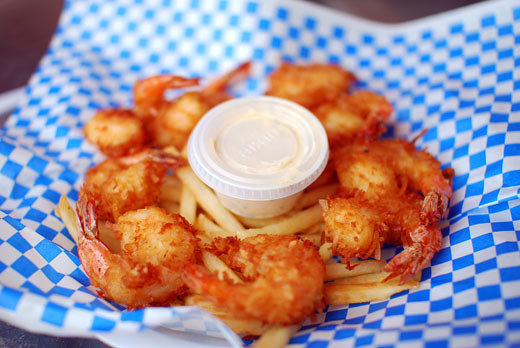Posts Tagged → street food
Street food isn’t a cuisine: it’s food that happens to be outside
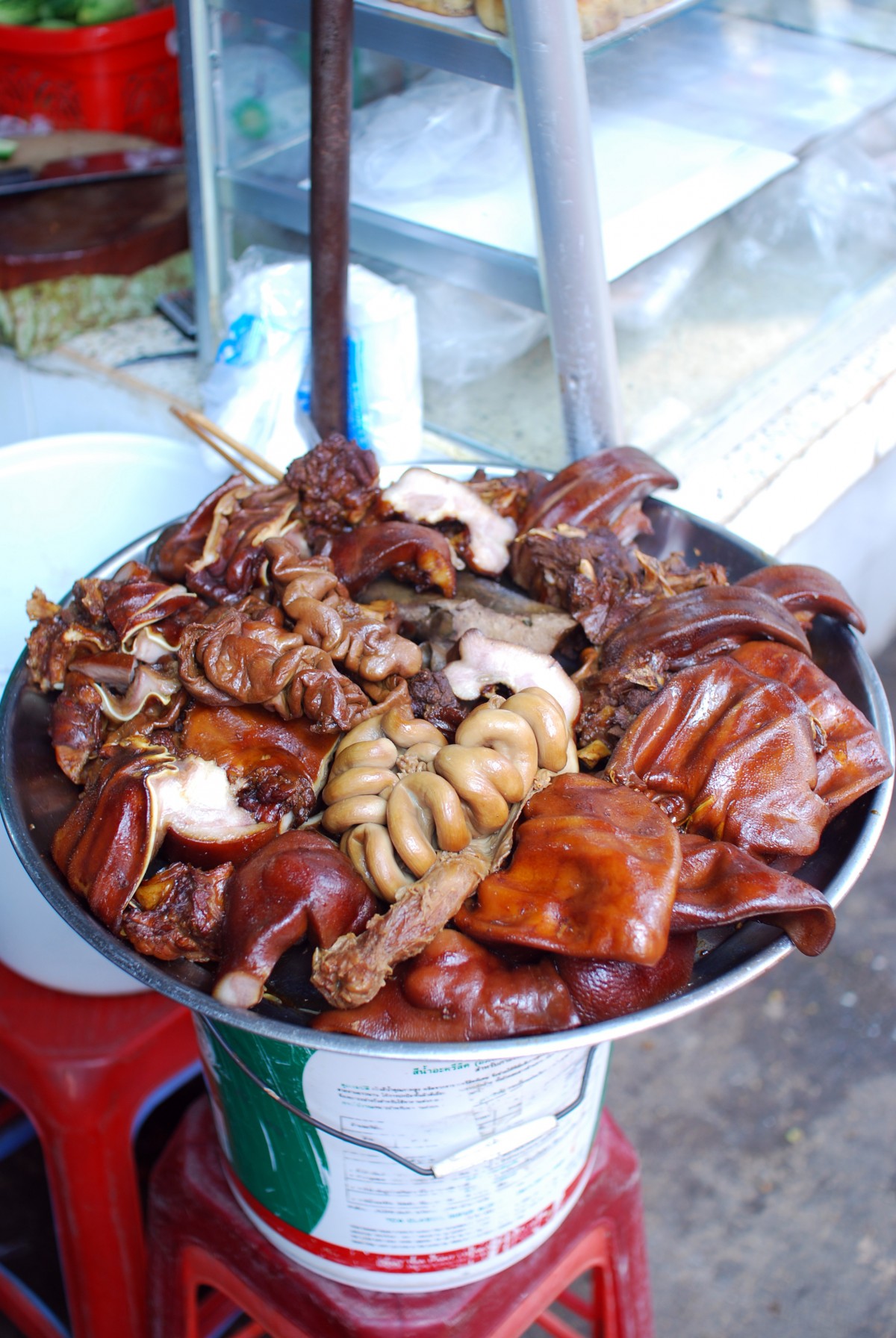
Just because you barbecued that tongue next to a road doesn’t make it a cuisine
I didn’t attend the World Street Food Congress a fortnight ago in Singapore but the outcomes from it seem to have devolved into the basest discussion of street food: name-calling, jingoism and fear of foreigners at once romanticising and ruining otherwise “authentic” food cultures. Some foreigners points of view seemed to be valid simply because they get parachuted into a cuisine courtesy of a television show, others invalidated despite decades of experience in the field and most likely, being the fixers for those same television shows. While I wasn’t at the conference, I’m no stranger to being accused of both creating nostalgia for and wrecking street food for foreigners and locals alike.
Singapore is a strange place to hold a street food conference given that most of its street food has been moved to malls and hawker centres. Conference founder KF Seetoh conflates the two. Bon Appetit’s Jenny Miller, covering the conference interviews him:
. “Street food is a cuisine, not a physicality,” he insisted. When I approached him after a panel to press the question, “Isn’t something lost when you move street food off the streets?,” he seemed impatient: “You are romanticizing it. Do you want to get food poisoning?”
Street food isn’t a cuisine: it’s food that happens to be outside. Food that is served on the street is a subset of the wider regional cuisine. The elements that link street foods together across different cuisines and cultures have little to with the food itself and more to do with local conditions that drive vendors into the outdoors. Mostly, that condition is poverty and lack of regulation which adds an awful irony to a conference that costs $750 in a nation ridiculed for its regulations. Additionally, there is a body of research demonstrating that the risk of street food contamination is low and not any higher than in restaurants.
What is lost when a street food moves indoors is transparency. When the food is served outside, you have an often far too intimate and transparent relationship with the food preparation. One of my favourite stories of this intimacy is from Austin Bush, eating the Burmese pickled tea leaf salad, lephet thoke:
Once several years ago I ordered the dish at a street stall in downtown Yangon. The woman mixed the dish, in the traditional manner, with her bare hand, squeezing and squelching the mixture thoroughly. After serving me the lephet thoke, she then stared at me while I ate it, licking her fingers the entire time.
On the street, there is generally nothing to hide: you can immediately pick a popular stall from an unpopular one, you can eyeball the chef, see the ingredients and preparation. In a mall, this doesn’t happen. So what’s the value in rolling together food that is served on the street and food from the mall?
My guess: billions of tourism dollars. Food tourism is gigantic business. In 2003, Tourism Queensland estimated that 22% of international visitor expenditure is food. If this held true for Singapore, whose GDP is ~10% tourism, this would be worth SGD$7.7 billion. The international fight to be perceived as having the world’s best street food is a high stakes game.
Sausage sizzle or popup charcuterie?

Photo Credit: Wooster Collective
I worked in a food truck for a few months in 1996. The truck parked at automotive parts swap meets and out the front of the cow pavilion at the Royal Easter Show. I cooked hundreds of frozen hamburgers, industrial soy-beef patties defrosting on the grill for families with matching mullets in the real need of a Cortina alternator. The jam donuts, chips and battered hotdogs in the roiling deep fryer, which by the end of the day tasted indistinct from each other, downed by men who smelled sweet like bovine.
The boss was happy insofar as I wasn’t a junkie and nothing caught fire. They paid cash, daily. It wasn’t the worst of food industry jobs that I’ve been involved in. It wasn’t noble. Apparently any non-addict could do it.
Australia has hundreds of similar food trucks and mobile food businesses from Mr Whippy vans to the sausage sizzles in front of hardware retailers. At the moment, there are nine food vans parked in Melbourne’s CBD alone, as shown on the below map. As far as I can remember, they’re all icecream vendors and donut vans.
There is something deeply amusing about both Sydney and the suburban Melbourne councils considering the need for more food trucks when there is already a well developed ecosystem.
The problem is that it’s not the cool street food ecosystem.
The depressing secret behind street food culture is that it exists because there is nowhere else to eat. In Phnom Penh, a good deal of the street food exists because it is too expensive for the average worker to leave their job and go home for a cheaper meal. Despite the backpacker authenticity myth, the bulk of it is as nasty as it is cheap; good street food is so rare that it is almost a euphemism. In Los Angeles, food trucks, especially the semi-permanent Mexican loncheras, offer an oasis in the food desert for factory workers and locals. If anything, they’re stuff white people like because they’re beacons of actual food in a grove of Olive Gardens or whatever pretend food is served in roadside mass-market chain restaurants. In Kuala Lumpur, street vendors develop symbiotic relationships with a cafe, multiple vendors clinging parasitically to a single coffee shop. In all cases, food trucks and street vendors tend not to compete with existing businesses because there aren’t any other existing businesses nearby. All are the result of local conditions.
Generally that condition is poverty, followed by richer people lionising food that poor people eat.
Australia already has a unique street food culture but it is one that is only celebrated on rare occasions because the rich have no interest in replicating or sampling what poor Westerners eat. The footy frank (PDF). The aforementioned Mr Whippy and his alliterative pseudonyms. The election day sausage sizzle. Preserves and cake stands at church fetes. They’re all temporary but not “pop-up” in the baffling modern parlance. Pop-up is used as obsfucation for expensive or designed or from somewhere else, some place where the poor eat capital-A authentic meals.
The unpopular Australian street foods are also the precursor to building a culture of street food but that hasn’t happened because unlike LA or Phnom Penh in the urban centres in Australia there is no shortage of great, easily accessible meals. There isn’t a footy frank vendor on every corner because good food is straightforward to find. In the absence of Michelin stars, many restaurants are awarded imaginary hats by our food press. There’s not even a shortage of good portable food from upmarket pork belly sandwiches to cheap sushi. Beyond the occasional cone of soft serve or post-Queen Victoria Market donut, there isn’t much of a market for heartier food served streetside when you can get a markedly better meal nearby and somewhere to sit and eat it.
It’s certainly not to denigrate the new wave of Twitter-wielding Roy Choi wannabes around Australia: the food itself serves that purpose. Melbourne’s taco truck’s tacos are almost as good as those that you can get in a shopping mall food court. With any luck, the new trucks and popups might bewilder the rich long enough to lead to new restaurants. There is just no deeper culture to support it forever.
View Food Vans in Melbourne CBD in a larger map
Takoyaki
I don’t understand the attraction of takoyaki. They’re balls of octopus and gluten served fresh on the streets of Japan, coated in a three types of umami: mayonnaise, bonito flakes, and their own special barbecue sauce. They turn out of their aebleskiver-like pans with a gluey consistency, a barely formed crust holding the octopus within, not quite cooked through but enough so that they are slightly rubbery. I don’t see the need to adulterate a perfectly good chance to barbecue octopus by itself. The batter seems superfluous.
Japan is mad for them. Within Tokyo, I doubt that you’re ever further than 500 metres away from the nearest chance to eat balled octopus.
Indentured Labour: Camy Shanghai Dumpling House’s secret, part 2
Last time that I mentioned Camy Shanghai Dumpling House, I conjectured that the popularity was due to its open secret status and cheapness. At least now we know where the cheapness comes from: not paying their staff. From the Herald-Sun:
Mr Chang worked 13-hour days from 9.30am-10.30pm with only five-minute breaks, which had to be approved by the boss, for $100 a day.
He worked six days a week and his only holiday was Christmas Day, according to Federal Magistrate Grant Riethmuller. “It is clear that the patrons attended for the quality of the Shanghai dumpling-style cooking rather than the ambience of the premises,” Mr Riethmuller said.
Mr Chang feared if he lost his job his visa would be cancelled and he took action only after he had permanent Australian residency, the magistrate said.
The court found that Mr Chang had been underpaid from December 2004 to January 2008.
Mr Riethmuller ordered restaurant owners Min-Seng Zheng and Rui Zhi Fu to pay $172,677 in unpaid overtime and penalty rates, and $25,000 of superannuation. Their lawyer, Alex Lewenberg, said the owners planned to appeal.
I also praise Federal Magistrate Grant Riethmuller for his knowledge of the premises.
Alfajores in Maidstone
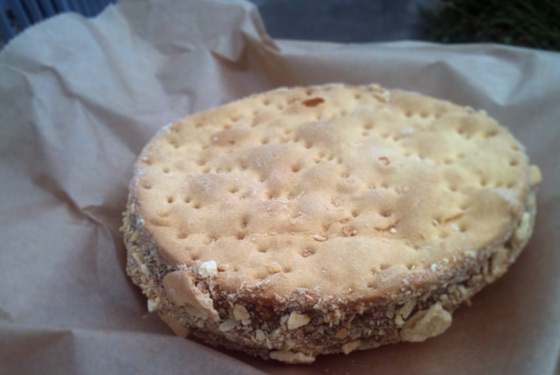
Melbourne’s west never ceases to dumbfound me when it comes to food. Maidstone is one of Melbourne’s least remarkable suburbs and thanks to the housing boom is making the direct transition from unremarkable council flats to unremarkable McMansions; rusting Camrys in the front yard making way for houses that touch three of the four boundaries of a property. The shopping strip on Mitchell St however is possibly the only place in Australia where a Sichuan takeaway joint is next door to a South American cake shop. It’s a veritable barrio chino.
Marciano’s Cakes in Maidstone specialises in South American sweets of which the above alfajor is representative. It’s a biscuit filled with dulche de leche and probably about ten times my daily intake of glucose in a single hit. I have no idea if this is a good one: it’s the first that I’ve ever seen.
The Shrimp Station, Kauai
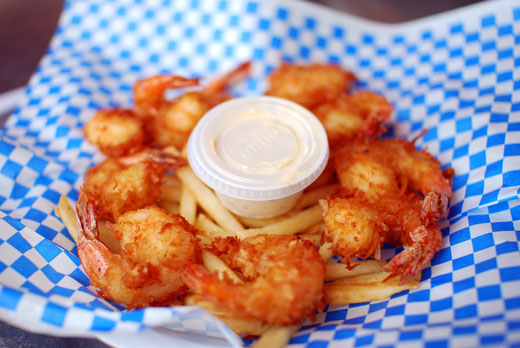
Some of the best food in America comes in shacks, lean-tos, vans, makeshift structures cobbled together from plywood and tarpaulin and fryer grease. The American food that Americans aspire to eat and inspires the most column inches in this decade seems to sit either at the bottom or at the top, either food van or haute cuisine, but rarely in the middle.
Talking about the middle seems to be more about despairing about the industrialisation of food, big corn, the banality of the corporate chain restaurant and the emptiness of the American home kitchen. American food is hollow in the centre. As a result, the food that Americans aspire to eat from other cultures tends to sit in the middle – home-cooked is shorthand for “authentic” if some other culture is standing in front of the household stove. Your locavoring Alice Water-y folk will argue otherwise.
It bookends neatly with my approach to food: that strange mix of street food and top end – although I am a bit tempted by the taro pie on McDonald’s special Hawaii menu here in Kauai because it combines two things that I despise made good by the deepfryer. I’m more here to surf than eat but food from a shack beckons.
The Shrimp Station in Waimea sits alongside the highway en route to Waimea Canyon and picks up the day-tripping crowd in either direction – it’s almost opposite the faded beachside deco majesty of the local cinema and market.
The drawcard is dealt straight from the deep fryer: Coconut Shrimp. Prawns in a crispy batter with shreds of local coconut, on fries. They’re top notch.
The shrimp taco is a little less inspiring – tasty, fresh salsa but a bit light on the prawn.
Location: 9652 Kaumualii Highway, Waimea, Hawaii
Tel: (808) 338-1242
At least she didn’t mention the war.
What is the point of swallowing the last 10 years of Hanoi food writing from U.S. magazines, visiting said city for a holiday-come-assignment, talking to the self same people you’ve read about in those U.S. magazines and spewing 2,129 words of uninspired, unoriginal, factually inaccurate, poop out the orifice of an American printing press at the other end? I dunno, but maybe the editors at The Smithsonian can tell us.
It’s worth taking a look over at Noodlepie as Graham Holliday eviscerates the latest steamy gut-pile of parachute journalism on Hanoian phở. I’m still amazed that there is a market for articles where the journalists interview just the “cultural translators” – those handy English-speaking experts who can be relied on for a pithy quote – rather than the people who cook the dish on a daily basis.
